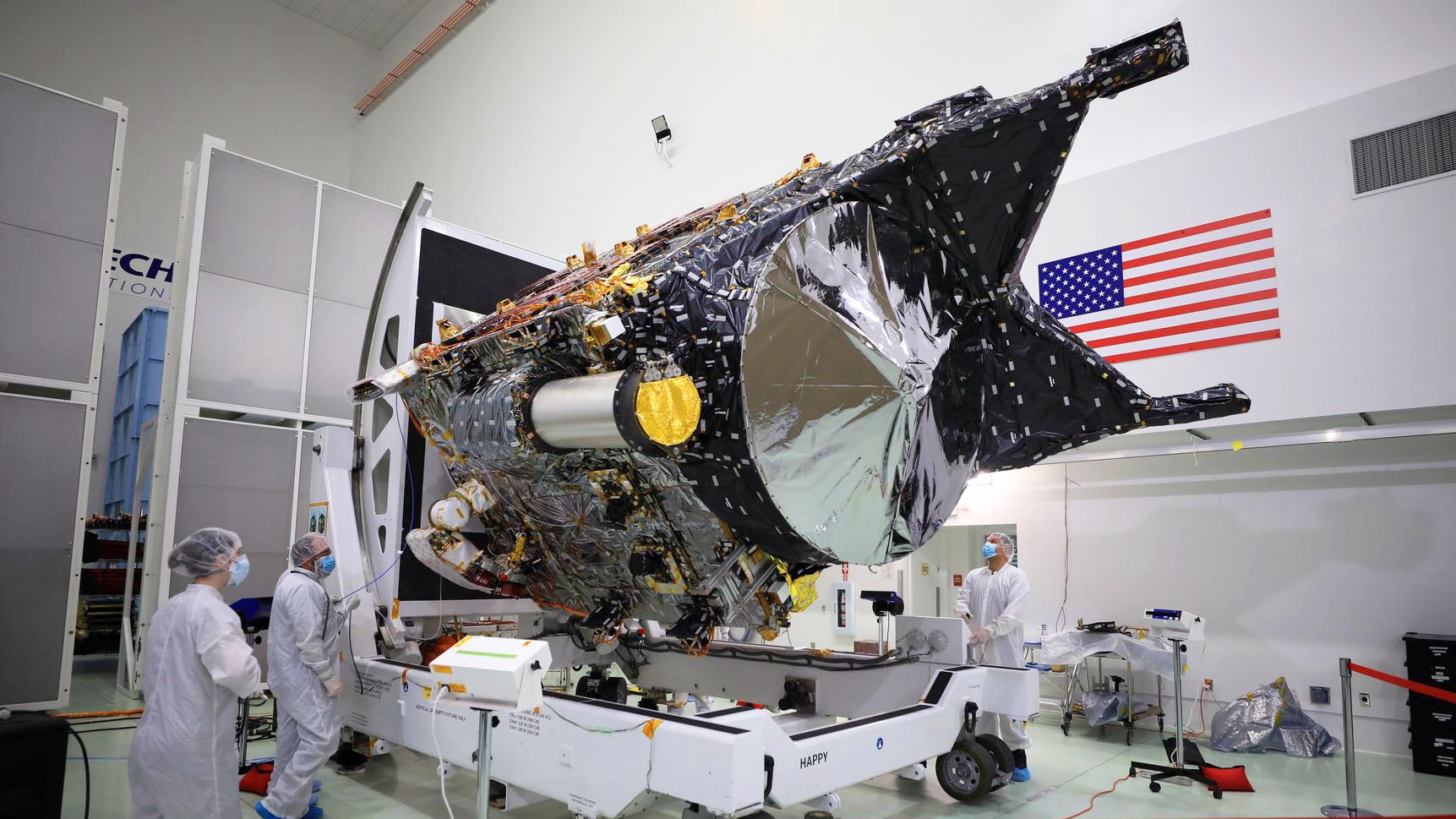When I heard about this I felt an amused twinge of envy. Over the last year I have been using an unimpressive 4G broadband service and at best get 20 Mbps, NASA’s Psyche mission has STILL been getting 23 Mbps at 225 million km away! It’s all thanks to the prototype optical transmission system employed on the probe. It means it can get up to 100 times more data transmission rate than usual radio.
NASA’s Pysche mission is on its way to explore the metal rich asteroid between the orbits of Mars and Jupiter called, not surprisingly Psyche. The intriguing thing about the asteroid is that it seems to be the iron rich core of an unformed planet. The spacecraft carried a wealth of scientific instruments to explore the asteroid including an imaging rig, gamma ray and neutron spectrometer, magnetometer and an X-band Gravity platform.
It began its two year journey on 13 October with its destination, a tiny world that may help us unravel some of the mysteries of the formation of our Solar System. The theory that Psyche is a failed planetary core is not certain so this will be one of the first of its mission objectives; is it simply unmelted metal or was it a core. In order to understand this it’s necessary to work out its age. Secondary to the origin, other objectives are to explore the composition and its topography across the surface.
Asteroid Psuche was discovered in March 1852 by Italian astronomer Annibale de Gasparis. Because he discovered it, he was allowed to name it and settled on Psyche after the Greek goddess of the soul. It orbits the Sun at a distance of between 378 million to 497 million kilometres and takes about 5 Earth years to complete an orbit. Shaped like a potato, or perhaps more accurately classed as ‘irregular’ it is actually a little ellipsoid in shape measuring 280 km across wide at its widest part and 232 km across long.

Of more interest than the objectives perhaps (although I for one am looking forward to learn more about this wonderful asteroid) was the trial communication system. The newly developed Deep Space Optical Communications technology (DSOC) is not the primary communications platform but it is there as a prototype.
The optical system which relies upon laser technology successfully sent back engineering data at a distance of 226 million kilometres. Perhaps more impressively though, the spacecraft has shown that it can transmit at a rate of 267 Mbps (YES you read that right, just over quarter of a Gbps!) The impressive download speed was achieved on 11 December last year when a 15 second ultra high definition video was sent to Earth. Sadly though, as the spacecraft recedes, its data transmission capability will reduce. Still far better than normal radio communications though.
Using a powerful modulated laser, the Optical Communication Telescope Laboratory in California will be able to send data at a low rate to Psyche. To receive data, a photon counting receiver has been installed at the Caltech Palomar Observatory to pickup information sent by the spacecraft. Communication has always been a great challenge in space exploration and, whilst we cannot reduce transit time for data, we can improve the amount of data sent at any one time. A great step forward in space exploration.
Source : NASA’s Optical Comms Demo Transmits Data Over 140 Million Miles

